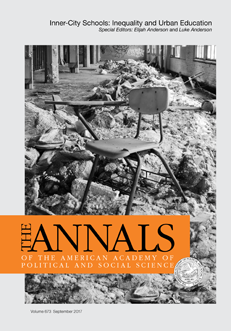This volume is based on the April 2016 Yale symposium on the “Inner City School: Inequality and Urban Education.” The symposium brought together a wide range of attendees, including researchers, teachers, principals, and students. The scholars presented their research, while the practitioners presented compelling accounts of their direct experiences in school settings. As organizers, we invited scholars from France to offer a comparative perspective, since schools around major European cities face similar challenges from structural forces as do those in the United States. The presenters shared their particular perspectives, while focusing on practices that they found to be effective in counteracting, or at least mitigating, the impact of critical systemic societal and institutional issues affecting students’ learning. What emerged from the conference was a rich and truthful portrait of the inner-city school that highlighted the everyday experiences of educators who have found ways to create constructive classroom and school environments despite the myriad challenges they face.
The unique contribution of this volume—including reports that address the many pressing issues that impact inner-city schools, such as racial segregation, diversity, immigrant deportation, violence, gangs, persistent poverty, policing, identity, the school-to-prison pipeline, and public policy—is its distinctly qualitative approach to these critical issues that so powerfully impact the everyday lives of students and teachers; it emphasizes the critical significance—as did the original Coleman Report—of the background of students and the highly challenging social, economic, and political context in which their schools operate.
It is with these important considerations in mind that we seek to broaden the academic and public conversation and work toward developing a better-informed understanding of inner-city schools and a more comprehensive approach to solving their problems.

